 |
| Flags out for launch. |
Today's pictorial is brought courtesy of diesel and gravity.
Our boat club's inner basin is shared with a second club and a modest naval base used mainly for the creation of Sea Cadets and marching bands.
 |
| A few cheers, sure, but I didn't expect a parade. |
Apparently, that old sea dog
Prince Philip was in town to do
something regimental. It tickles me to think that he somehow looked out the window of the royal limo and spotted
Alchemy aloft and later said "I say, Elizabeth, over in the colonies I saw the most
astounding flying boat..."
The pre-flight consisted of "slingers" and "linesmen/women" arranging the lifting and pulling items correctly:
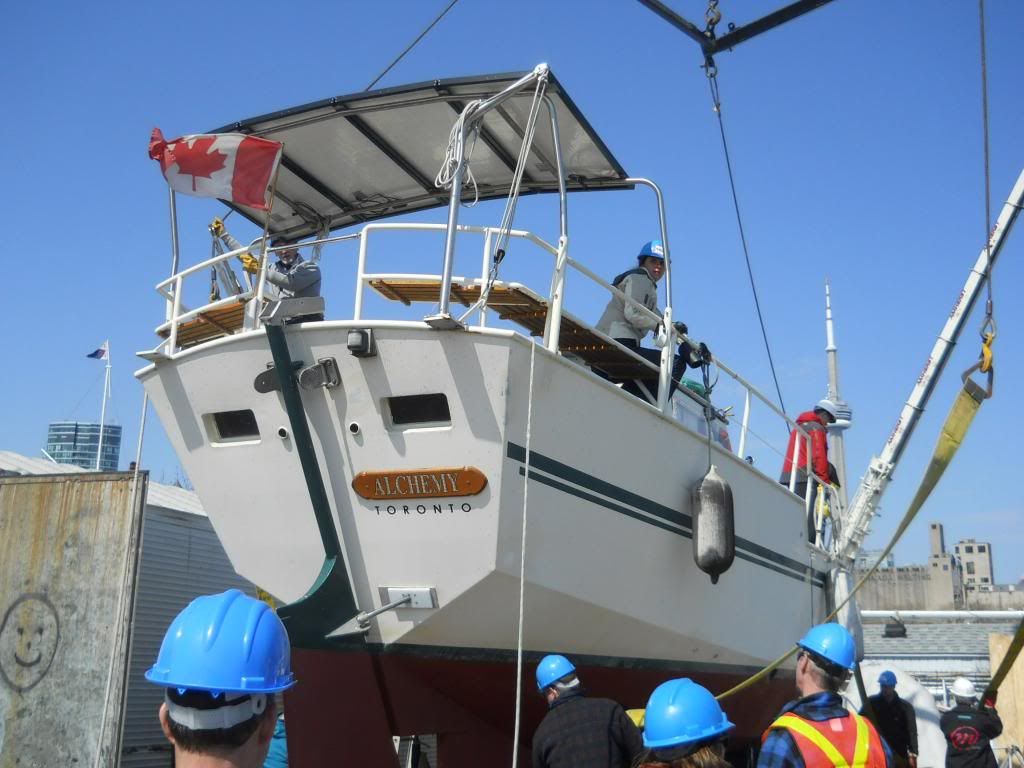 |
| The long lines at the quarters are to spin the boat from the ground while it's in the air. Non-trivial labour. |
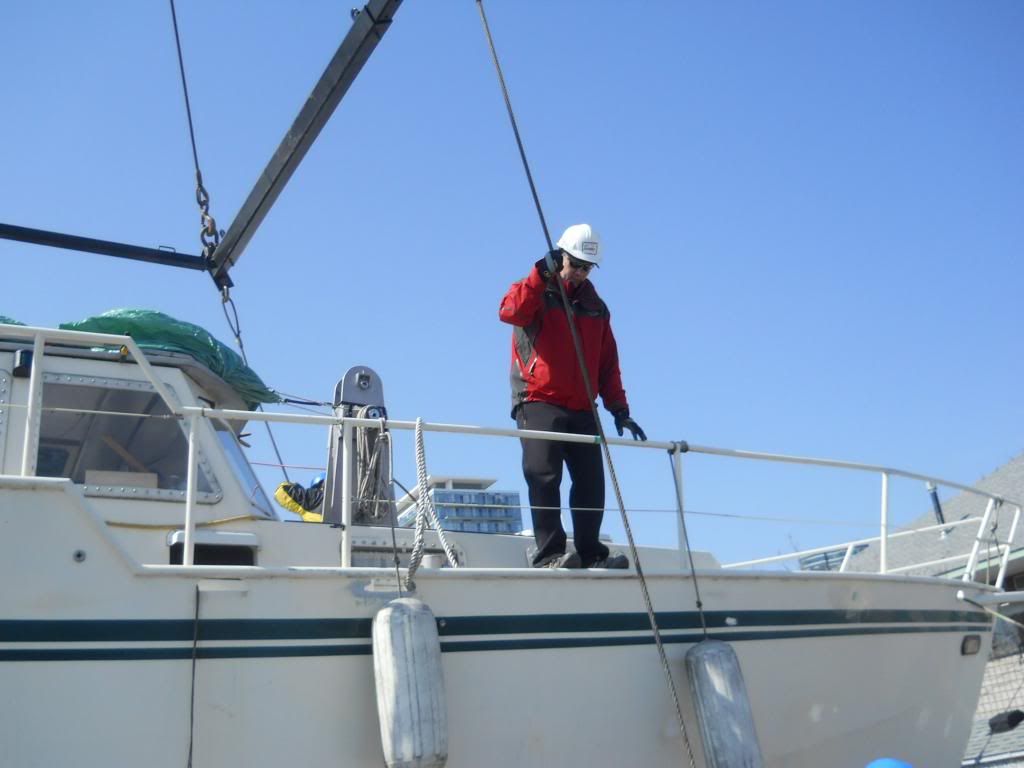 |
| Mrs. Alchemy is the primary painter and appreciates when the finish escapes chipping. |
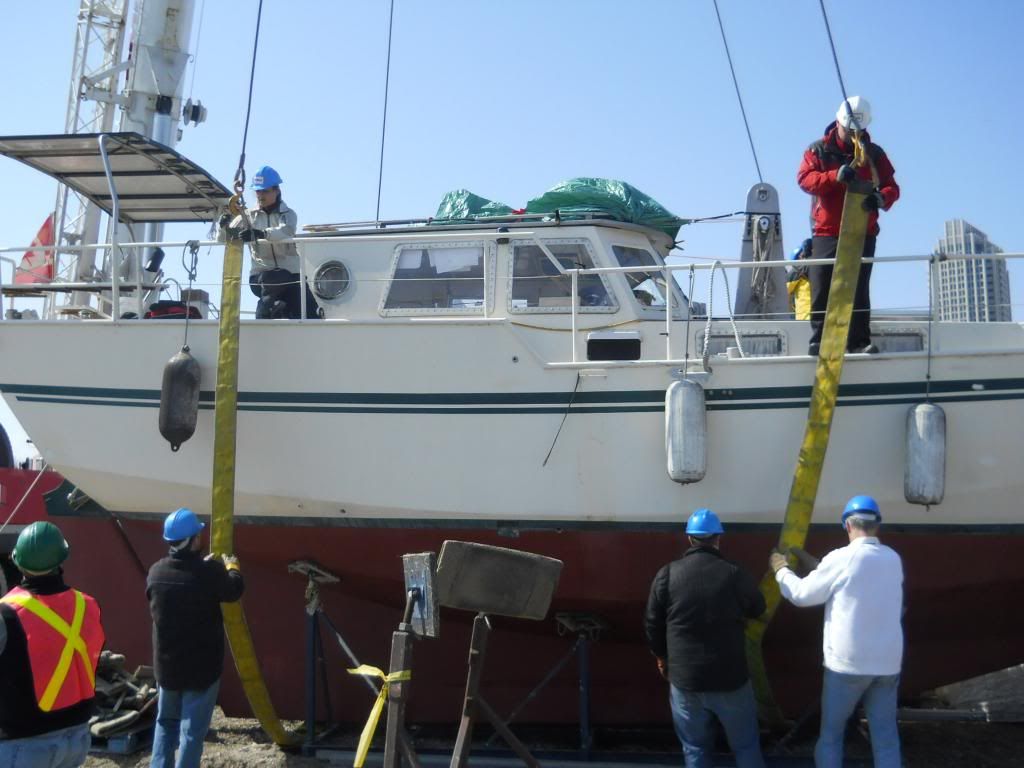 |
| These slings and the hooks and cables to which they are attached weigh a lot and require careful handling. |
The crane slated to haul
Alchemy's 14 or so tonnes skyward proved to be a snug fit between the remaining boat rows and our forklift shed.
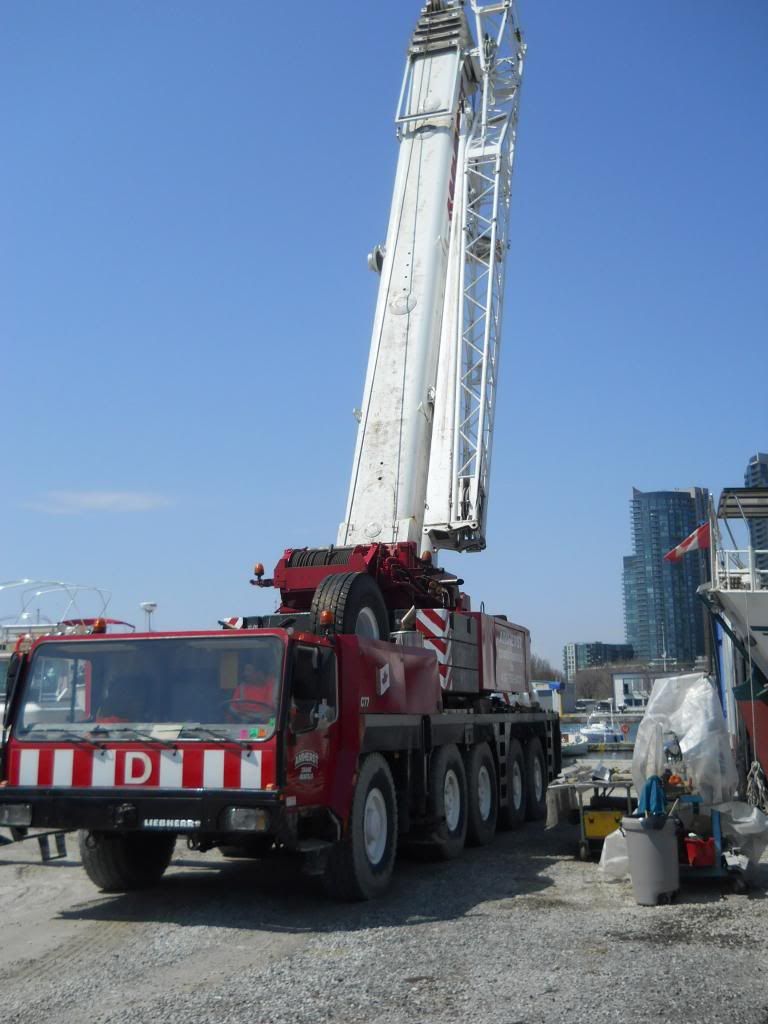 |
| We've used Amherst for some years. They very much know their stuff in a job that doesn't tolerate error. |
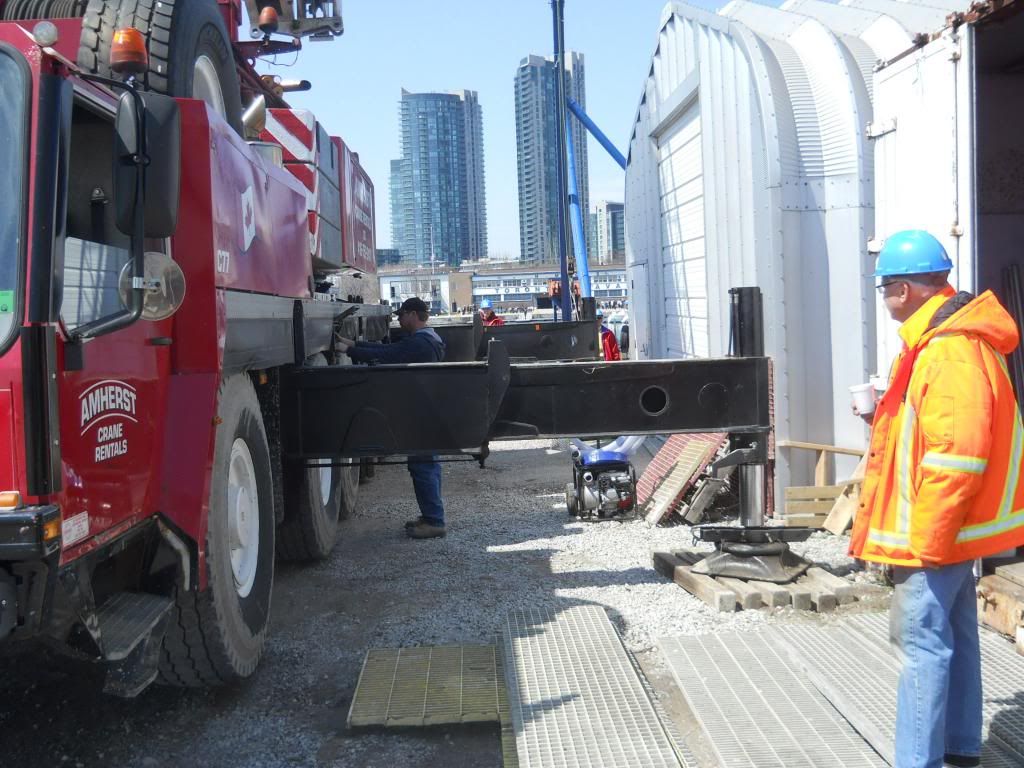 |
| The bracing legs were extended into gaps between boats and building. Tight fit! |
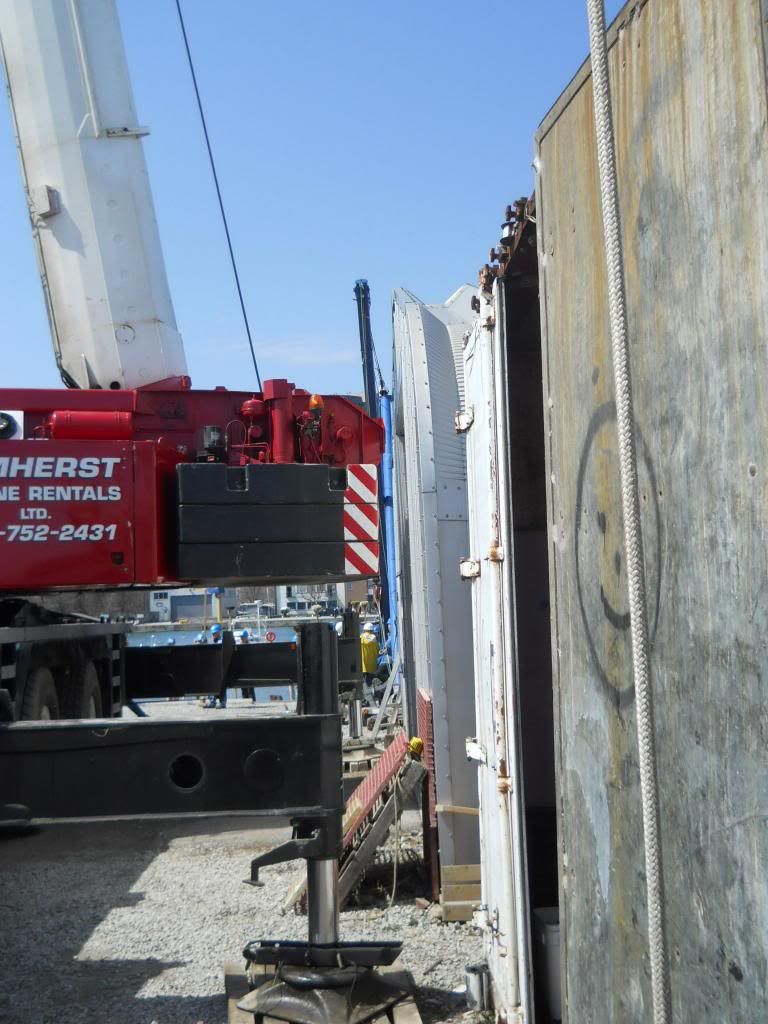 |
| Moving the shed would take some time. |
I was a little concerned that a) there was no "
cinch belt" used on the slings (the horizontal belt or strap keeps the vertical slings from shifting under load), and b) the forward sling was a little too far aft. These photos seem to suggest I was right as
Alchemy takes off in a decidedly bow-down attitude.
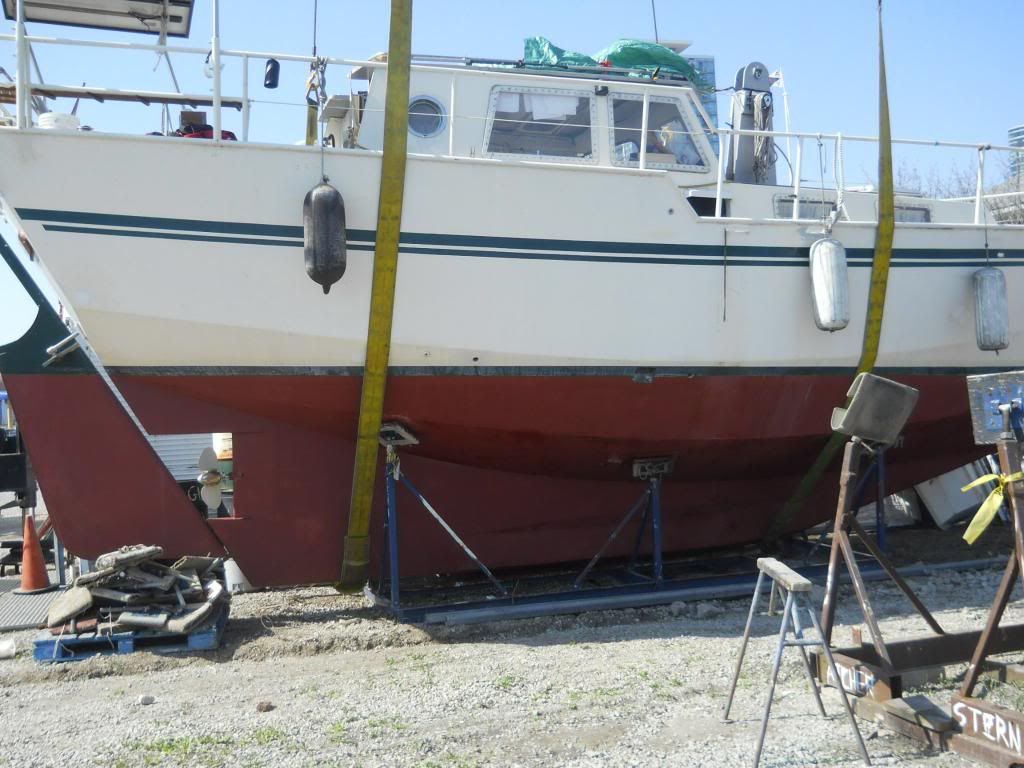 |
| The green tape marks on the top rail indicates the preferred sling positions. |
On the other hand, having the forward sling right where the keel bottom meets the angle up to the bow was arguably a less "slide-prone" placement.
 |
| Nicer fenders are awaiting deployment. Honest. |
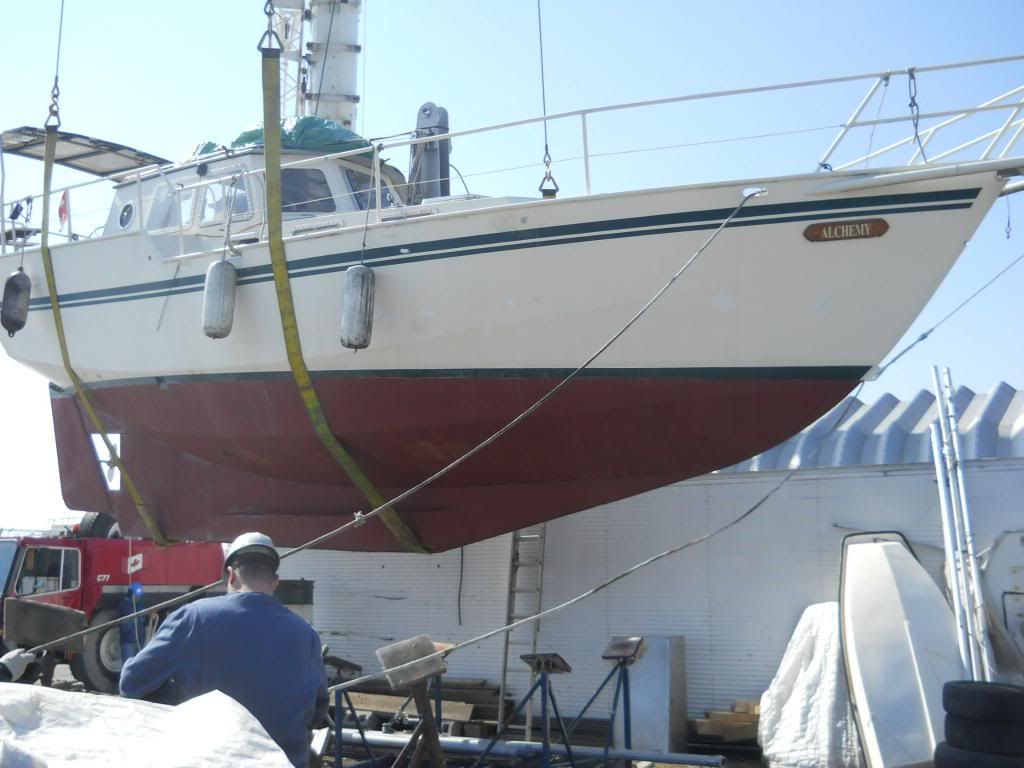 |
| Alchemy looks like some sort of secret U-Boat design here. |
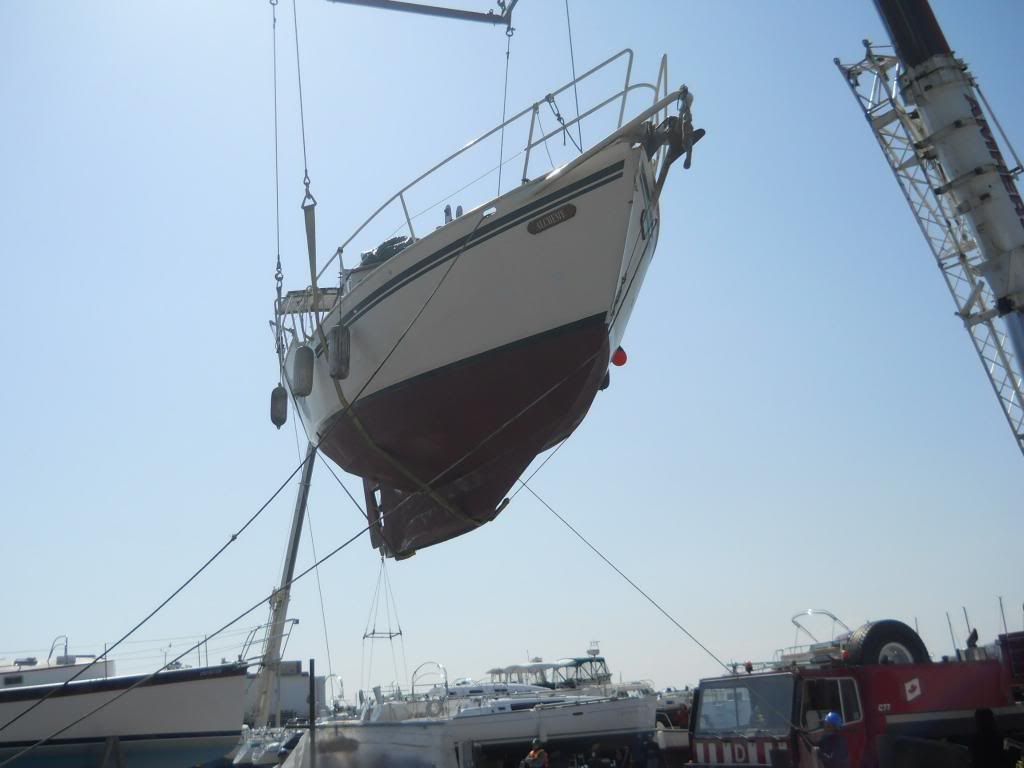 |
| This is the part where even a modest breeze can cause trouble. |
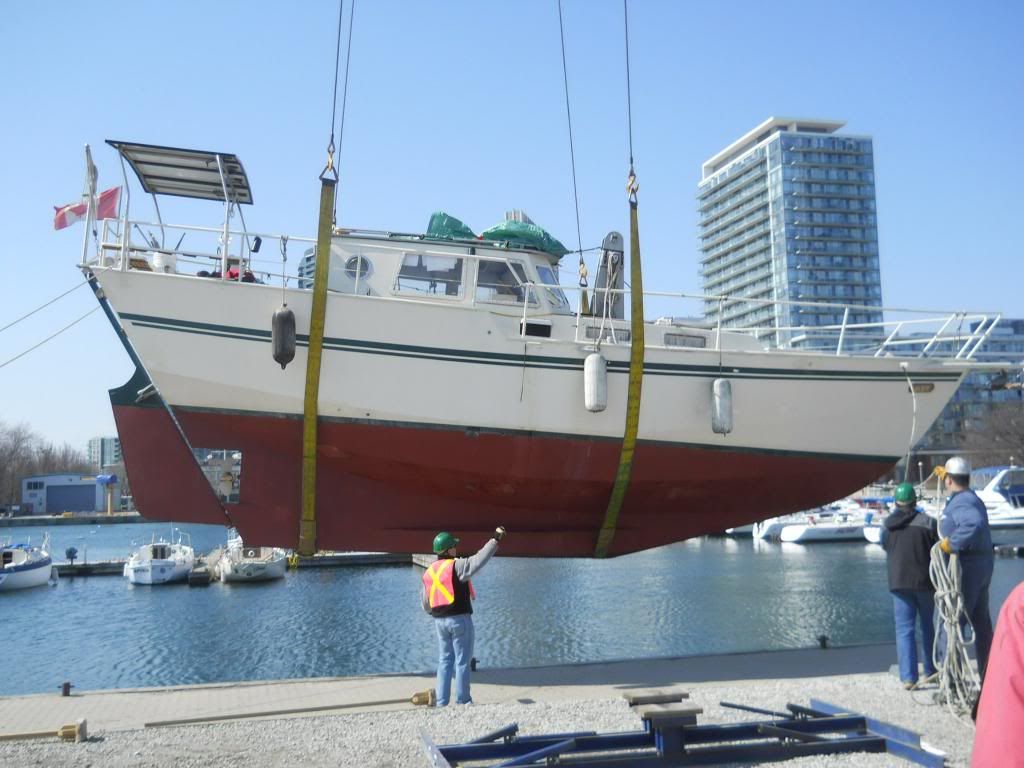 |
| The fellow in the orange vest is actually signalling, not single-handedly lifting our boat. |
As soon as
Alchemy hit aitch-two-oh, a pressing concern meant I needed the slings to be kept on for a few moments. There was a chance that a few years out of the water had, despite my inspection of seacocks and hose clamps, caused some hole or crack to appear and would allow water in the boat. There was also a possibility that the freshly installed "
Dripless Shaft Seal" on the freshly installed drive train would not, in fact, prove to be
remotely dripless, and that an operation called "
burping" would be required. As would the laboriously wired bilge pump of bigness seen below:
 |
| The dichotomy of dry in and wet out remains fascinating. |
Non-boat owning readers, or owners of boats with traditional "stuffing boxes" that are supposed to drip into the bilges, may not appreciate the pleasure with which the owner of a just-launched steel boat regards a bone-dry bilge. Steel boats, it is said, rot from the inside out, and all the painting and remediation is ideally linked to the reduction of water on the inside to as close to zero as is possible. If sinks, spills, condensation and shower sumps are, as is customary, going to be part of the boat's working life, then the goal is containment and confinement of whatever water's moving about the boat, timely removal of same, and ventilation sufficient to dry out condensation that can form when a boat filled with warm or warmed air sits in cold water. You could
write a book about it,
really, but the start point is keeping the water out of the lowest, coldest parts of the hull, the
dreaded standing water.
 |
| Not seen: Moisture. Seen: Recycled bilge pump hose and a potential wine cellar. |
Not a drop was found that day. Very good news for me, for my expert installer Cap'n Matt (this bit being very important to get right, and he'd done a very similar installation on his steel boat Creeation), and good news for the shore crew, who could direct the crane to the next boat and forget about my dramatic needs and go-tos.
And after a misjudgement in steering and "way on" that reflected the skipper's long absence from the hydraulic helm and a second go-around by the tow boat (the engine's in but the fuel system is not) in order to lay her safely on the dock, the very gratifying sight of our future home at her designated berth made both a very long day and a sometimes frustrating winter and spring all worth it.
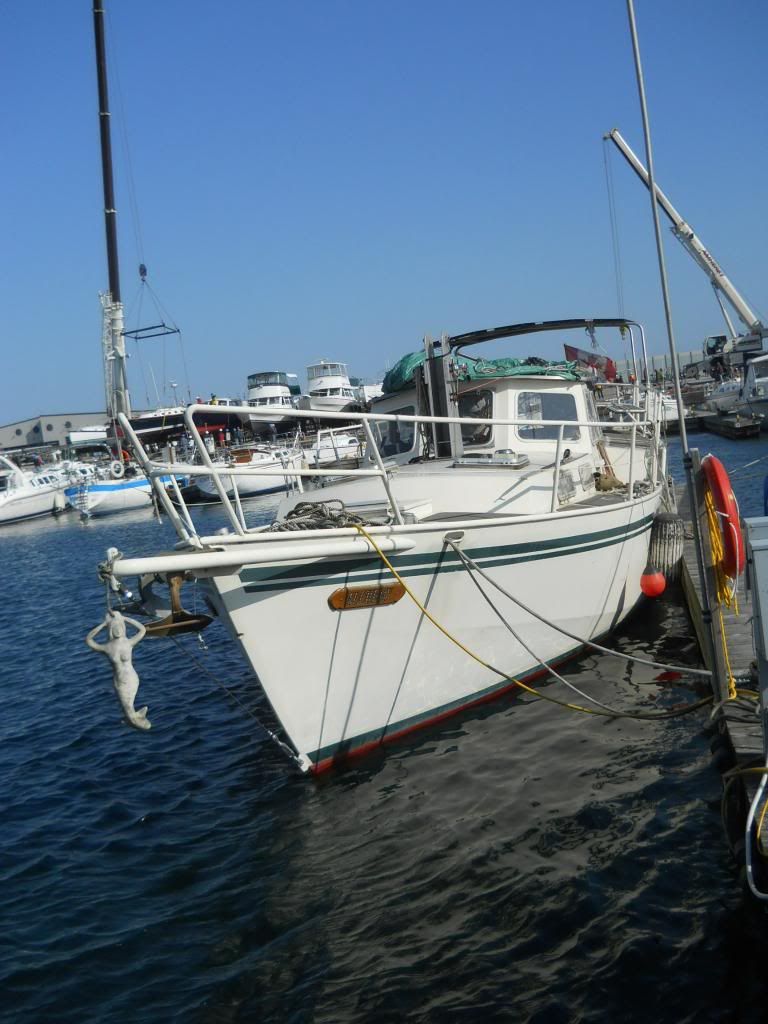 |
| Heck, she looks a lot bigger in the water than in the cradle! |
Further adventures in boat restoration to follow.





















3 comments:
Wonderful to see her finally in the water. She does look bigger, oddly, because a big bit is missing.
All these fascinating voyages that you've planned are now more tangible, it's like a rebirth.
Well done, Rhys!
CONGRATULATIONS!!
Thanks, John and thanks, Ceol Mors. It's a good feeling. Of course now a whole new phase of work aboard starts. It's just that in the cradle, it's work "up". "Aboard" really does indicate a proximity to runny ice.
Post a Comment